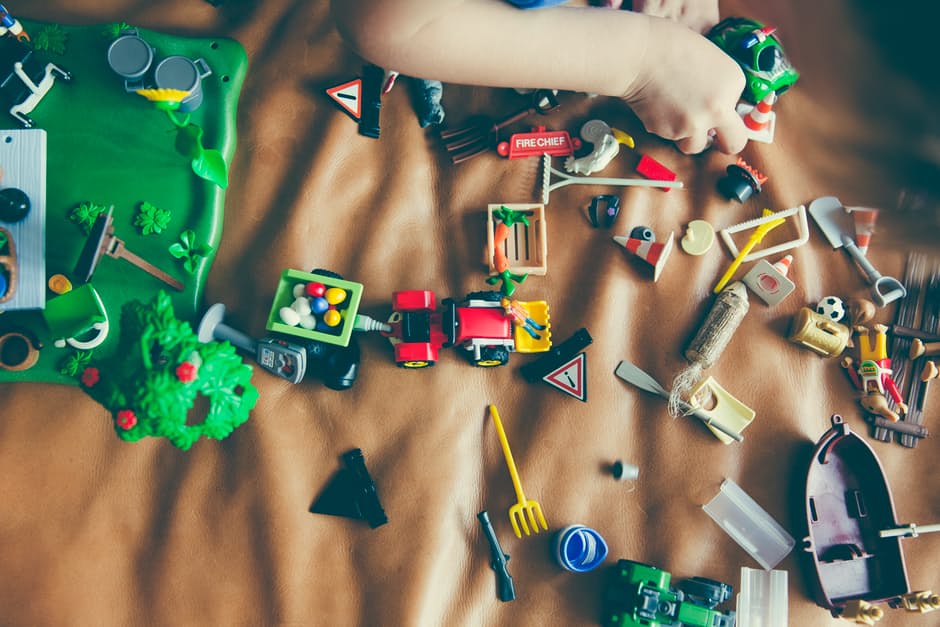News Copy - WITH VIDEO: https://we.tl/nK0ooJ4hPA
The average American child receives more than $6,500 worth of toys in their lifetime, according to new research, commissioned by the Toy Industry Association (TIA).
A study of 2,000 parents with children between the ages of 2-12 looked at toy habits and trends across the generations and found the average child receives $6,617 worth of toys before they reach their teens.
The survey found that youngsters have plenty of choices when it comes to toys and playthings, with the average household studied owning 71 toys. One fifth of households possessed more than 100 toys, and more than one in 10 homes owned a vast collection of more than 200 toys, the survey found. The average family spends $581 a year on toys.
The research found that even with all the money spent on toys each year, 81 percent of parents repurpose their children's toys.
More traditional toys are the most likely to be repurposed with building blocks and sets, educational toys and bicycles cited as the most commonly repurposed toys.
Action figures were passed down by nearly half of the 2,000 parents polled, while four in 10 had repurposed a doll for their child.
And it’s not just the children who have toys; the survey also reveals nearly six in 10 parents say they still have toys that were handed down to them or passed through generations.
“Toys hold a special place in people’s hearts and memories so it’s no surprise that families are passing toys down through generations,” said Joan Lawrence, TIA’s toy safety expert and mother of three.
“But parents and grandparents should make sure that the toys they are passing down are age-appropriate and that the wear-and-tear on a toy is not significant enough that it could pose a threat to a child, like small parts or broken pieces. Keep in mind that today’s strict toy standards and regulations are tougher than ever before,” Lawrence cautioned.
Celebrating toys across the generations, the survey respondents also voted Lego, Monopoly and Play-Doh as some of America’s “greatest toys ever.”
Others that stand the test of time, according to parents, included Uno, the Cabbage Patch Kids, Beanie Babies, Barbie, Razor Scooter, and LeapFrog’s educational toys.
But whether playing with old classics, new favorites or re-purposed toys, some warnings are being ignored - just one fifth of those polled always reads and follows the age-grading recommendations for toys.
Although 56 percent do often check, worryingly, nearly a third (32%) only check sometimes and one in nine parents rarely or never check age-grading guidelines for toys.
“The number one thing parents can do to ensure safe play is to read the age guidelines on toy packaging. The fact that many people are ignoring age-grading on toys is alarming,” said Lawrence. “The labeling on the packaging is based upon the developmental skills and abilities of children at a given age, and not on how smart a child may be.”
The holidays are the perfect time of year to remind parents and caregivers about safe play, given that nearly six out of every 10 toys children receive are given during a religious celebration like Christmas and Hanukkah.
Although nearly one fifth of parents most commonly buy toys online, parents are still twice as likely to buy in store and four in 10 purchase toys both on and offline.
“Whether families are buying toys online or at their local toy stores this holiday season, they should know that all toys sold on U.S. store shelves are safe and must adhere to more than 100 rigorous tests and safety standards that are in place to protect children,” said Lawrence.
Nonetheless, parents’ buying habits are influenced by external sources. The research showed 54 percent had seen an alleged ‘dangerous toys’ list issued by a consumer group.
“Each year around the holidays, certain non-governmental organizations (NGOs) will come out with lists of allegedly dangerous toys, and year after year, their claims have proven to be false,” said Lawrence. “What they are doing is scaring parents and adding undue stress to a festive and joyous time of year. The bottom line is that toys are tested for safety ... and have been bringing great happiness and the benefits of play to kids for generations.”
Top 25 Toys of all time
Lego
Monopoly
Play-Doh
Barbie
Crayola Crayons
Hot Wheels
Etch-A-Sketch
Atari
Connect 4
Easy Bake Oven
Checkers
Chutes and Ladders
Scrabble
Twister
Cabbage Patch Kids
Yahtzee
Playing Cards
Battleship
Operation
Hungry Hungry Hippos
Roller Skates
Frisbee
Slinky
Hula Hoop
Yo-Yo
END
